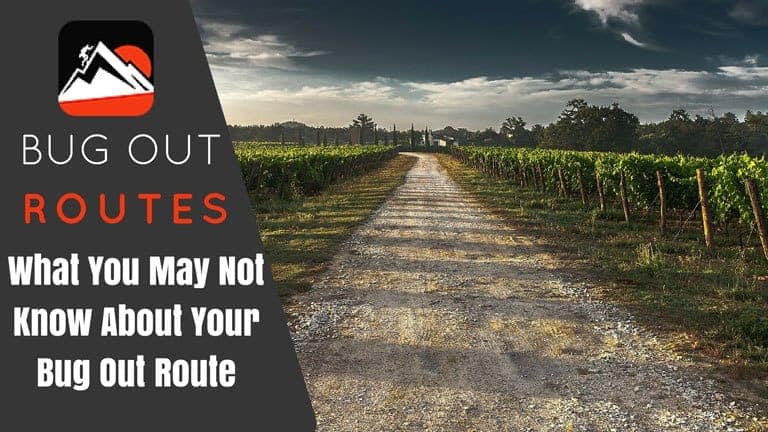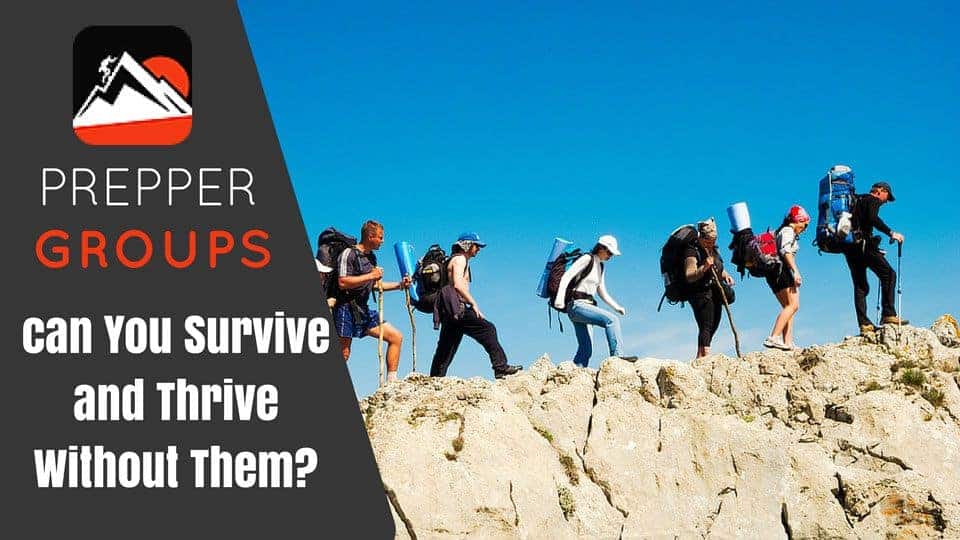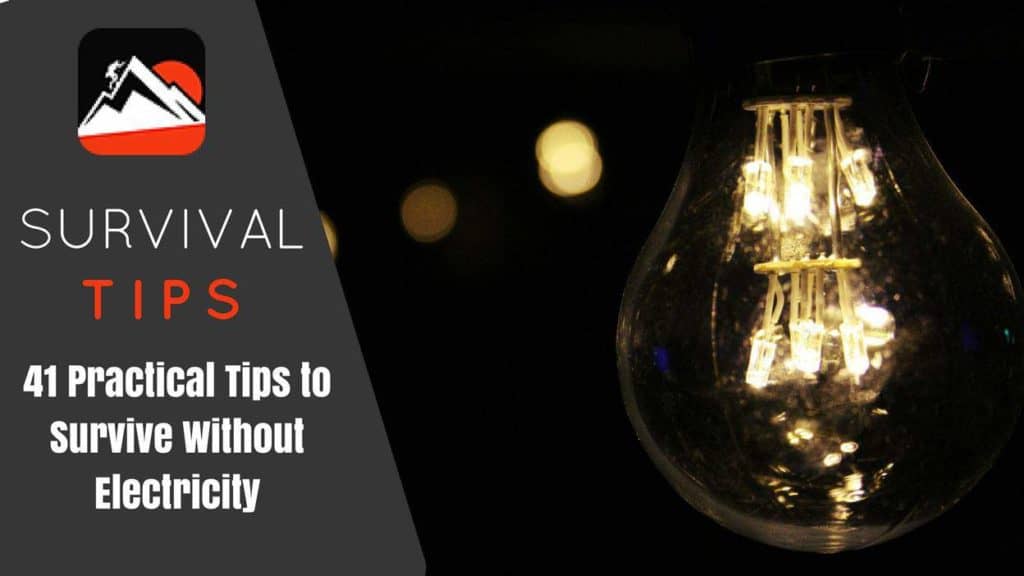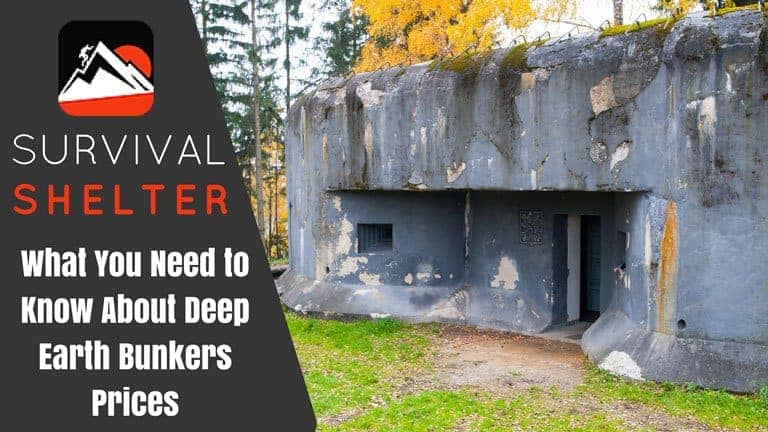Contents
I am not the only prepper that has put in many hours of research related to choosing the best bug out location. The best bug out plans (including mine) don’t stop at finding the best place because getting there is also just as important. This article will show you how to choose one primary bug out route and two alternate routes to your destination. Once a crisis hits, there is no time to begin thinking about this important aspect of prepping. It is my strong belief that this plan must be understood by everyone in the group and they can follow it whether it is day or night.
According to Todd Savage, a well-known and respected prepper, “…one nasty fact remains; not living full time at a retreat will require bugging out, it’s just a matter of time. The journey for most will be long and treacherous, may take weeks, months or even years and may result in injury or casualties to the group. However, only those who are prepped, trained, have an up to date evacuation plan with a viable destination will be successful.”
Critical Parts of the Bug Out Route Assessment

Starting and Ending Points – As obvious as it may sound, you must start off your assessment with a clear understanding of where you are starting from and where you want to go. Depending on the number of people bugging out with you and the number of starting points, you may need far more than three possible routes. For example, if you know that your starting points may be at home, work, or picking up your children from school, you will need three routes for each origin point. If you need to meet up with children or others that cannot travel to meet up with you, then add on another three routes or ways to get to them before you can start on actually moving towards your location.
The speed of Crisis Progress – While you are considering different routes, consider that each crisis has a beginning, mid-point, and end. Each of these stages can occur so rapidly that it will be virtually impossible to move until the next stage begins. You should always ask yourself if and how the paths in question will remain open if the crisis hits without warning, or takes several days to evolve. In general:
- All of the paths you choose should be easy to use if you leave early. Getting out of a city, town, or any other area before the disaster or Marshall Law hits. Once civil controls like roadblocks and increased surveillance are in place, you may need to time your exit within minutes of certain events. It is my opinion that the best time to depart for the bug out locations is when the troops or other law enforcement officers are tired, bored, or just before the changing of the shift.
- Keep a low key surveillance on troop movements as to their locations and their ongoing operations. When a pattern of movements begin to appear, and the time looks and feels right then make you move to leave. This could take hours or days to complete and could be either day or night. Try to look like you belong in the area, and that you have no plans to get past the guards.
- If a disaster strikes suddenly and with no warning, you should have at least one route that does not appear on maps or any other place where you would come across other people. Even if you cannot travel in a straight line to your destination, these alternatives will work, but not as quickly.
Who Will be Traveling With You?
If you have friends in the local community that have been preparing with you, then they may also be people that you want to have at your bug out location. It is also possible that spouses, children, and elderly or disabled people will be traveling with you. Make sure that each route is safe for everyone involved, and that you have enough supplies on hand and stashed along the way to meet everyone’s needs.
Tasks to Carry Out While Traveling
When you drive back and forth to work each day, or routinely “travel” from one place to another, it is very easy to

become lulled into thinking that you don’t need to make extensive plans for reaching your bug out location. What if you have to travel even half a mile with rioters all over the place, road blocks, or cannot use a car to transport a handicapped person. Trips that would only take a half hour or so during “normal” situations can take far longer, and therefore require some additional planning. In this instance, each person traveling with you should have certain tasks to complete. Everyone should also cross-train so that everything gets done even if one or more people become unable to do their part.
Here are some tasks that should be covered in your bug out route task list:
- Preparing food
- Guard duty for times when the group must rest
- Advance guard to ensure the path is still clear
- Waste disposal and covering the escape trail
- Medical needs
- Keeping track of goods and supplies
Also see: What You Need to Know About Deep Earth Bunkers Prices
Transportation Type Advantages and Disadvantages
- Traveling on foot allows you the largest number of routes and terrains to move through. On the negative side, you will be able to carry very little and will need to rely on more caches of food, water, and other supplies along the way.
- Bicycles and motorbikes will allow you to move faster over a fairly large number of terrains and allow you to carry more goods. They have the disadvantage of attracting unwanted attention and can also be dangerous to people that do not have sufficient experience with rugged or difficult terrains.
- Cars can carry more people and goods, however, they may not be able to travel in off-road areas. Cars can also attract the attention of rioters and others that would want to stop your progress. As a general rule of thumb, the larger the vehicle, the fewer route options you will have and the greater the attention you will draw to yourself.
Roads and Terrain
The type of terrain you are traveling through will determine what vehicles to use. If most of the driving is done off the main road, then a four-wheel drive vehicle would be my first choice. Surplus military trucks and other vehicles are best on mountainous or poorly maintained roads and pathways.
Preparing to Travel
Simply tracing a few paths on a map or figuring out a few ways through the woods is not enough preparation for bugging out of a major crisis situation. Your assessment should also include traveling each of the routes alone, and then with your group. Here is a list of minimum items to carry during your assessments of the bug out routes:
- A good compass that is sturdy, reliable, well built, easy to use.
- Your bug out bag (it should include medications, tools, and anything else you think might be important.)
- Pen and paper to write notes on the different routes.
- Ham radio setup.
How To Make Bug Out Route Assessments
When making an assessment of possible bug out routes, you need to become completely familiar with the territory the route is going through. This includes notes about the people in the area so that you know how to blend in if needed. Here are some other notes that are very important to have even if you have to update them from time to time or discard them if your route plans change:
- All starting points and ending points.
- Meeting points where other groups join up.
- Safe locations of friends, hospitals, remote safe areas that are off the beat and path.
- Unsafe areas such untrustworthy neighbors and places that food and water are not available. Color code each of these areas so that you do not have to hunt around for written notes.
- Possible ambush sites.
- Where you must cross rivers and streams.
- The location of towns and cities.
- Possible locations of food, water, and fuel caches.
- Location of all terrain markers like radio towers, water towers, and any other large man-made structures.
- The date that you traveled through the area, and when you will go back and conduct another survey. You should travel each route every six months, or at least once per year.
- If you are going to use the route, rate it as your first, second, or third choice based on what you found out. Transfer those ratings to any map or other travel aids that you will use in a crisis situation.
[embedyt] https://www.youtube.com/watch?v=szmQwVUwRO0[/embedyt]
Documenting Planned Routes

you conduct a survey. In a crisis situation, you may become even more confused because of all the stress. Make all of your notes as clear and simple as possible without losing details. Well documented routes will help you stabilize and give you the information you need. I like to use a map and colored pencils so that I can see how all my planned routes fit together. Just use one color for each complete trail and then observe how they may intersect. If multiple people are traveling to the same location, identify their trails as well so that you meet up or have some ideas about where everyone else is.
All routes should be listed from start to finish with a new line for each turn or area of interest. These lines are defined as “legs”. Each leg should have the following information:
- Where you’re at – this could be as simple as a turn, town, or even a checkpoint. I recommend that when you give your location it should include a grid coordinate so you can backup your written plan with your map.
- How to identify your location via landmarks – You must keep in mind that when you run your route, it could be dark, there could be some construction, or someone else could be using your route that has never run it before. Permanent and obvious landmarks will prevent you from making mistakes.
- The next direction to go in – It is very important to mark down both the turn direction (right/left) and the cardinal directions(north/south). Use a small mark to indicate if there are potential dangers ahead so that you know to review the next leg more carefully before going ahead.
- Any supplies in the area and how to get to them.
- How far to go – This is the distance between point a and the next point b.
- How long you’ll be going along that leg – Estimated travel times based on time of day, traffic condition, possible limitations, and rate of travel.
- A list of possible detours and how to get through them.
- Any other important notes such as usual weather conditions, types of people living in the area, traffic patterns, rest areas or other areas of interest, indicators that I am near my next leg beginning point, how to know if you have missed a turn or other important change in route direction.
- Finish off your note taking by taking photographs and then add descriptions to them. Attach these photos to your map.
Proving Your Bug Out Route
Just about every prepper overlooks this last, and final important part of choosing a bug out route. Even though you may think it is perfect, there is nothing like having another person go over it and make note of their experiences. You can simply give the whole package to a good friend and have him/her try to follow the route. With the testing, you may gain some valuable insights that will make it easier and safer for you and others to follow the trail.
Please feel free to share your experiences with choosing and developing your bug out route planning. What difficulties did you have, and what would you like to improve on?
[embedyt] https://www.youtube.com/watch?v=H0C3mfntVPU[/embedyt]
Recommended reading
- Planning Your Evacuation or Bug Out Route
- The Gut-Wrenching Reality: One of the Best Bug-Out Strategy Guides You’ll Ever Read
- How To Make A Family Bug-Out Plan





